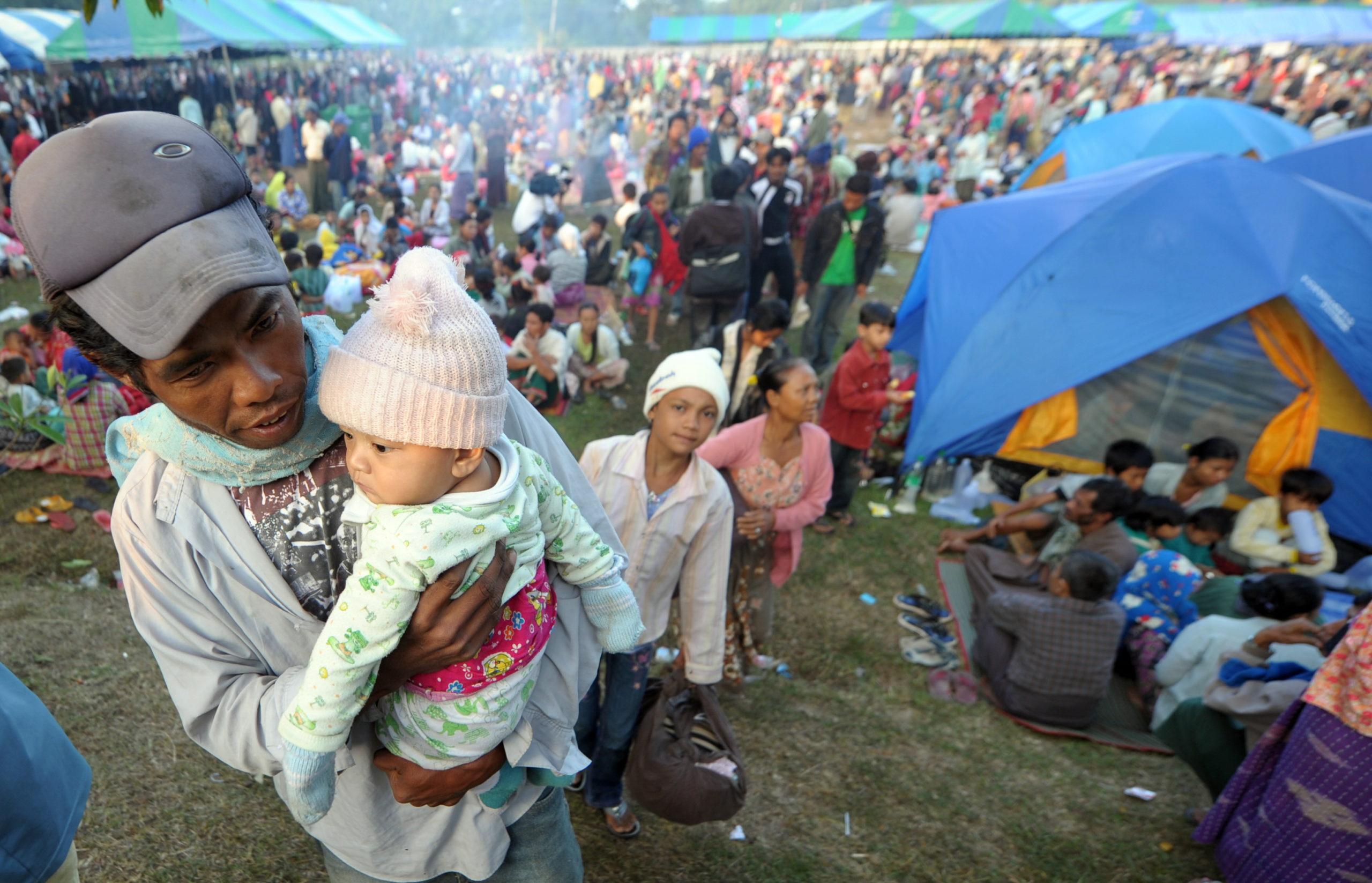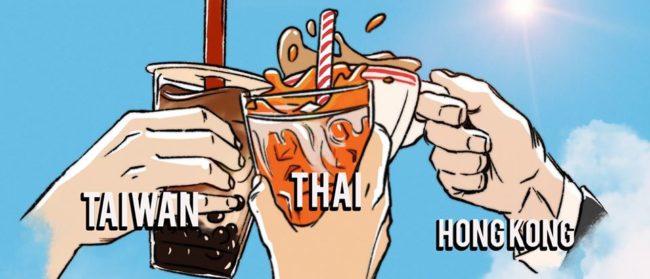Za Za Thin is a young Karen woman now, but she’s never wandered far from the Umpiem Mai refugee camp on the Thai-Myanmar border.
Za Za Thin, 23, has called Umpiem Mai home for all but two of her years. The camp is just one of nine such settlements in the region for displaced people, most of whom are from Myanmar’s ethnic minority groups and have for decades struggled through warfare and political repression in their homeland.
After long years on the Thai side of the border, Za Za Thin, 23, and her peers in camp are still largely dependent on outside aid. But as Myanmar’s political and economic landscape has shifted, with the formally reclusive country welcoming a boom in foreign investment in recent years, so too have the priorities of donors who have long offered a lifeline for the refugees living in Thailand.
In 2016, Za Za Thin noticed the camps in Thailand were getting less food and resources. Now, she says the community members in Umpiem Mai are pushed to find new ways to support themselves in the face of dwindling outside aid.
“They feel unhappy and sad at the same time because they don’t have enough food for their family and they have to risk finding work outside of the camp,” she says. “There is no security for us.”
Myanmar, for decades an international pariah state run by a military government, opened up to the outside world after the 2015 elections clinched by Daw Aung San Suu Kyi and her National League for Democracy party. That development, hailed at the time as a progressive victory for civilian leadership, hit a note of optimism for outside donors and governments looking to start fresh with the country’s development.
Consequently, donors began moving resources away from the Thai border and towards supporting a national peace process aiming to end several of Myanmar’s long-running civil wars between ethnic groups and the government.
But that’s proved easier said than done, with Myanmar’s democratic transition met with many obstacles. Despite having an ostensibly civilian government, the military, also known as the Tatmadaw, maintains a firm hold on the country and continues to have a violent and fractious relationship with the country’s many ethnic groups.
Human rights organisations have appealed for transparency and accountability from the Myanmar government, also calling on the international community to enact financial sanctions if the government fails to abide by ethical reporting practises. Major donors from Norway and Sweden have withdrawn funding in recent years, while the EU has stopped funding food aid completely.
Ei Htu Hta, a Karen camp for internally displaced persons (IDPs) some 30km from the Thai border, lost food aid in September 2017. Meanwhile, the Shan refugee camp Koung Jor on the Thai-Myanmar border saw its own food aid come to an end just a month later. Food insecurity in particular has led many refugees to consider returning home, despite unstable and unsafe conditions.
EU Commission spokesperson Balazs Ujvari says the funding reductions at the border are part of a shift in focus away from short-term humanitarian assistance in favour of development projects in education, technical training and vocational training.
The intent, Ujvari said, is to move beyond immediate day-to-day aid and instead build livelihoods to prepare refugees for a potential return home once safe conditions are established.
This is not the first time the funding landscape has shifted in Myanmar. When former Myanmar military president Thein Sein initiated a substantive peace initiative in 2011, it was met with support from the international community.
Audun Aagre is the director of the Norwegian Myanmar Committee, which has been working since 1992 with actors in the country’s democratic movement. Aagre says the 2011 funding shift was part of a “political U-turn” by several Western governments to focus on engaging with the Tatmadaw as stakeholders in a civil solution, rather than simply as part of the problem.
“There was a belief that the reform process was their exit strategy – not a survival strategy – in which cross-border aid didn’t fit,” Aagre told the Globe. “If the government and military were genuine on federalism, why not channel the support from the centre towards the ethnic areas at the border instead, and strengthen ready-made federal structures on education and health?”
One of the main sources of funding for groups and initiatives working on the border formerly came from USAID through a $49.6 million dollar initiative known as Support for Health, Institution Building, Education, and Leadership in Policy Dialogue (SHIELD).
This funding was provided from 2005-11 and supported initiatives including capacity building, curriculum development, teacher training, technical assistance and expertise for youth, basic education for children and adults, as well as civil society development.
It’s hard to build confidence in the prospects for return and the restoration of rights and livelihoods when the troops that refugees fled from remain near their villages
Duncan McArthur, the Border Consortium
In 2011, $60 million of USAID funding was tapped for a six-year extension through the Project for Local Empowerment (PLE) to support civil society groups along the border, with larger organisations given the lead on various grants in their respective sectors. At its height, the project served approximately one million refugees and displaced people from Myanmar.
The funding shifted in 2017 to fund projects within Myanmar itself.
Rob Whitelaw, a former educational programming director for refugee populations in Mae Sot, Thailand, said that, even with forewarning, when the funding came to an end, many groups struggled and felt underprepared. Dealing with those changes meant some groups had to close, merge or move inside Myanmar to access funding.
“There was worry and kind of feeling that people assumed funding would be renewed because the money had been constant every year for 12 years – even though USAID had always said this was the end date. There was panic when people realised this was a definite decision,” Whitelaw said. “The financially sustainable solution is for the camps to close and move towards this goal, but you can’t just forsake the people living there now.”
Local groups argue these resources are still vital. In a 2019 report published by advocacy group Progressive Voice, representatives from 15 area organisations appealed to foreign donors to reinstate funding, arguing that the dispossession of refugees from their land in Myanmar had effectively robbed them of their prospects for support.
But cross-border aid can be complicated, Whitelaw says, and the administrative hurdles involved in such projects can be unfavourable to donors.
“Development projects are not always just neatly tied to one geographic country,” Whitelaw explained. “Donors are concerned [about cross-border projects] because they have to worry about twice as many governments, twice as many currencies.”
The refugee population in the area has almost halved over the past decade, in part a response to the shift in funding.
The situation in the camps has left refugees with the difficult choice of either risking their return to conflict-affected areas; staying put while access to resources and services become less available; or entering the informal, illegal migrant workforce in Thailand.
The Border Consortium (TBC), a nonprofit working with refugees from Myanmar in camps in western Thailand, says the refugee population there has decreased by almost 40% since about 2010. Correspondingly, the TBC reports funding to the camps has been roughly cut in half in that same period.
However, TBC Myanmar programme director Duncan McArthur says there’s a “false equivalence” between providing foreign aid to refugees along the Thai border and development projects in Myanmar proper.
“There are 50 million people in Myanmar compared to 100,000 refugees on the Thai-Myanmar border, so it’s not a quid pro quo equation,” McArthur said. Even on a per capita basis, he says there has been a 1000% increase in foreign aid in Myanmar compared to a roughly 25% decrease for refugees in the past decade.
He says the most common reason foreign governments give to justify funding cuts is that there are more urgent needs elsewhere. For some donors, that means reallocating humanitarian funds to different parts of the world; others are remaining in Myanmar, but shifting their focus to conflict zones on the country’s northern and western borders.
Many refugees perceive the reductions in assistance as a form of pressure to return to Myanmar, regardless of protection and security concerns.
“It’s hard to build confidence in the prospects for return and the restoration of rights and livelihoods when the troops that refugees fled from remain near their villages,” McArthur said.

“Too much funding is spent on large international agencies and state-centric visions of development,” he added. “However, ethnic service providers and civil society organisations will be the drivers of recovery in conflict-affected communities and federalism from below in Myanmar.”
Jordan Pescrillo is a project coordinator at Wide Horizons, a program formerly based in Mae Sot, Thailand, which trains young refugee adults in advanced community development. Pescrillo worked in Mae Sot for three years, during which time her work was supported by the USAID-funded Project for Local Empowerment. In 2016, one of Wide Horizons donors informed them that they would only consider funding the program if the operations moved inside Myanmar. After a series of meetings, the team decided to relocate.
While Pescrillo agrees border-based human rights organisations feel pressure to follow funding inside Myanmar, she says border groups must consider where they can best serve their communities.
“Some of the schools in Mae Sot, like Minmahaw, for example, serve the migrant population. If they move inside, they cannot do that,” she said. “Even though they have been asked to formalise curriculum and consider moving, instead they have formalised their place on the border and continue to fight for individual donors and take this risk year by year.”
Many human-rights based organisations along the border have had to comply with the shifts in funding by restructuring their programmes. This means cutting services to vulnerable groups who need it most, such as survivors of domestic violence in need of counselling, legal support and a safe place to stay during mediation with perpetrators. Teacher salaries too are usually the first to be cut, as are teaching supplies.
Young people who have grown up in the refugee camps are eager to pursue higher education – which for years was sustainable, well-funded and of a high standard. But as funding dips, the incoming generation is afraid this could limit their opportunities.
“We just want a life where we can be happy with our families without starving,” says Za Za Thin. “We try to live in the camps as best as we can because we do not have land in Burma and we can’t live outside of the camp because we are illegal in Thailand.”


